 Hyundai Accent: How vehicle audio works
Hyundai Accent: How vehicle audio works
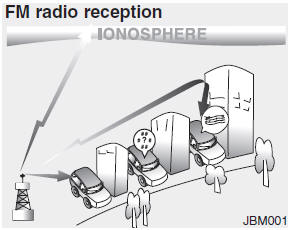
FM radio reception
AM and FM radio signals are broadcast from transmitter towers located around your city. They are intercepted by the radio antenna on your vehicle. This signal is then received by the radio and sent to your vehicle speakers.
When a strong radio signal has reached your vehicle, the precise engineering of your audio system ensures the best possible quality reproduction. However, in some cases the signal coming to your vehicle may not be strong and clear. This can be due to factors such as the distance from the radio station, closeness of other strong radio stations or the presence of buildings, bridges or other large obstructions in the area.
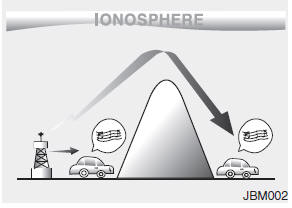
AM radio reception
AM broadcasts can be received at greater distances than FM broadcasts. This is because AM radio waves are transmitted at low frequencies. These long, low frequency radio waves can follow the curvature of the earth rather than travelling straight out into the atmosphere. In addition, they curve around obstructions so that they can provide better signal coverage.
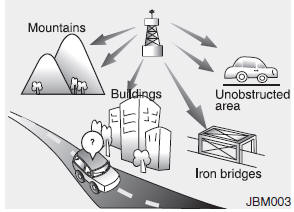
FM radio station
FM broadcasts are transmitted at high frequencies and do not bend to follow the earth's surface. Because of this, FM broadcasts generally begin to fade at short distances from the station. Also, FM signals are easily affected by buildings, mountains, or other obstructions. These can result in certain listening conditions which might lead you to believe a problem exists with your radio. The following conditions are normal and do not indicate radio trouble:
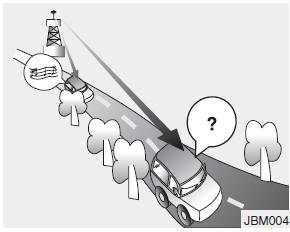
- Fading - As your vehicle moves away from the radio station, the signal will weaken and sound will begin to fade. When this occurs, we suggest that you select another stronger station.
- Flutter/Static - Weak FM signals or large obstructions between the transmitter and your radio can disturb the signal causing static or fluttering noises to occur. Reducing the treble level may lessen this effect until the disturbance clears.
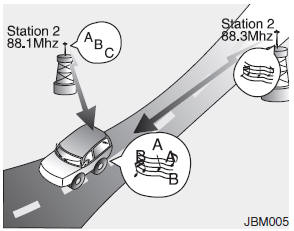
- Station Swapping - As a FM signal weakens, another more powerful signal near the same frequency may begin to play. This is because your radio is designed to lock onto the clearest signal. If this occurs, select another station with a stronger signal.
- Multi-Path Cancellation - Radio signals being received from several directions can cause distortion or fluttering. This can be caused by a direct and reflected signal from the same station, or by signals from two stations with close frequencies. If this occurs, select another station until the condition has passed.
 Steering wheel audio control
Steering wheel audio control
The steering wheel audio control button is installed to promote safe driving.
CAUTION
Do not operate audio remote control buttons simultaneously.
VOLUME (VOL +/-) (1)
Press the up button (+) ...
 Satellite radio reception
Satellite radio reception
You may experience problems in receiving XMв„ў satellite radio signals in the following
situations.
If you are driving in a tunnel or a covered parking area.
If you are driving beneath the t ...
See also:
Inspection
Connecting Rod And Crankshaft
1.
Check the connecting rod end play.
Using feeler gauge, measure the end play while moving
the connecting rod back and f ...
Heated Oxygen Sensor (HO2S). Description and Operation
Description
Heated Oxygen Sensor (HO2S) consists of zirconium and alumina
and is installed both upstream and downstream of the Manifold Catalytic Converter.
The sensor output voltage varies ...
Description and Operation
OBD-II review
1. Overview
The California Air Resources Board (CARB) began regulation
of On Board Diagnostics (OBD) for vehicles sold in California beginning with
the 1988 model year. Th ...
